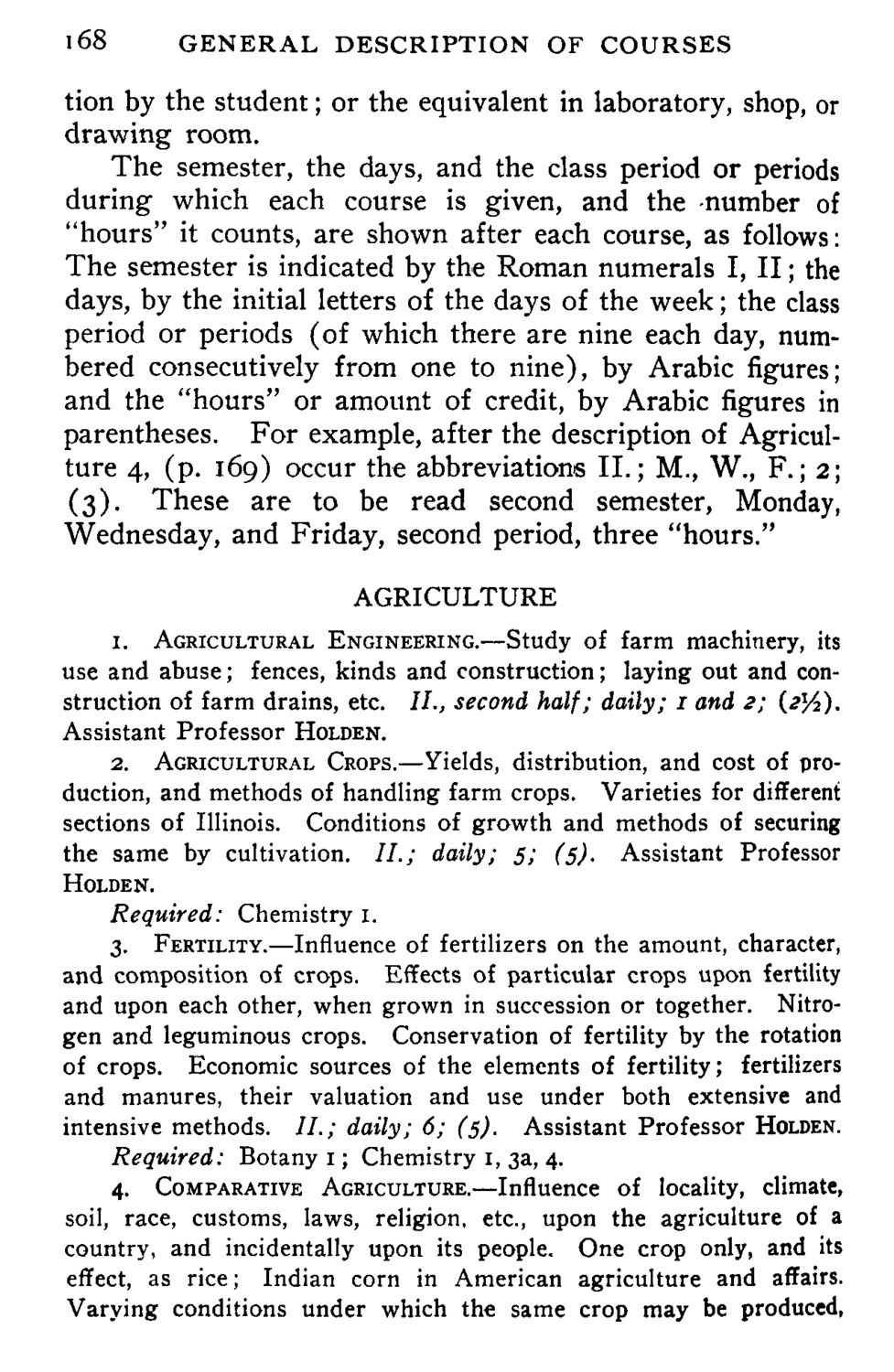| |
| |
Caption: Course Catalog - 1898-1899
This is a reduced-resolution page image for fast online browsing.

EXTRACTED TEXT FROM PAGE:
168 GENERAL DESCRIPTION OF COURSES tion by the student; or the equivalent in laboratory, shop, or drawing room. The semester, the days, and the class period or periods during which each course is given, and the number of "hours" it counts, are shown after each course, as follows: The semester is indicated by the Roman numerals I, II; the days, by the initial letters of the days of the week; the class period or periods (of which there are nine each day, numbered consecutively from one to nine), by Arabic figures; and the "hours" or amount of credit, by Arabic figures in parentheses. For example, after the description of Agriculture 4, (p. 169) occur the abbreviations II.; M., W., F.; 2; (3). These are to be read second semester, Monday, Wednesday, and Friday, second period, three "hours." AGRICULTURE 1. AGRICULTURAL ENGINEERING.—Study of farm machinery, its use and abuse; fences, kinds and construction; laying out and construction of farm drains, etc. //., second half; daily; 1 and 2; (2%). Assistant Professor HOLDEN. 2. AGRICULTURAL CROPS.—Yields, distribution, and cost of production, and methods of handling farm crops. Varieties for different sections of Illinois. Conditions of growth and methods of securing the same by cultivation. / / . ; daily; 5; (5). Assistant Professor HOLDEN. Required: Chemistry 1. 3. FERTILITY.—Influence of fertilizers on the amount, character, and composition of crops. Effects of particular crops upon fertility and upon each other, when grown in succession or together. Nitrogen and leguminous crops. Conservation of fertility by the rotation of crops. Economic sources of the elements of fertility; fertilizers and manures, their valuation and use under both extensive and intensive methods. / / . ; daily; 6; (5). Assistant Professor HOLDEN. Required: Botany 1; Chemistry 1, 3a, 4. 4. COMPARATIVE AGRICULTURE.—Influence of locality, climate, soil, race, customs, laws, religion, etc., upon the agriculture of a country, and incidentally upon its people. One crop only, and its effect, as rice; Indian corn in American agriculture and affairs. Varying conditions under which the same crop may be produced,
| |